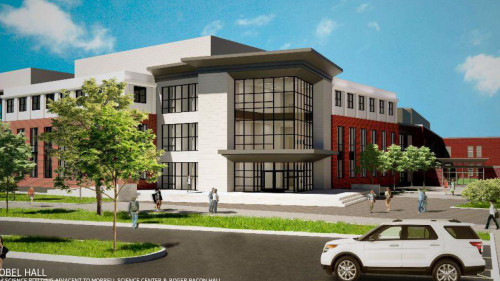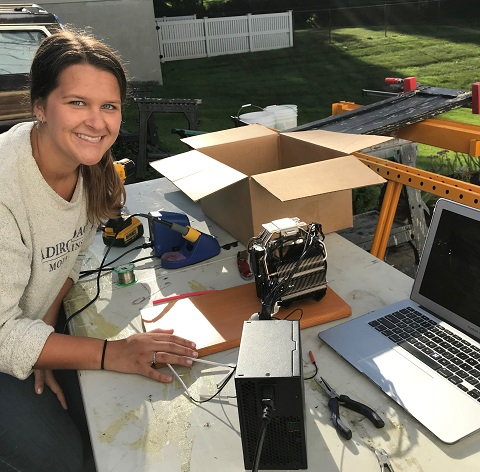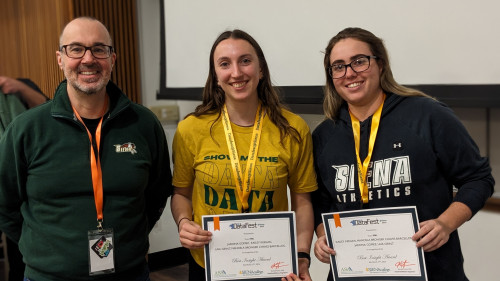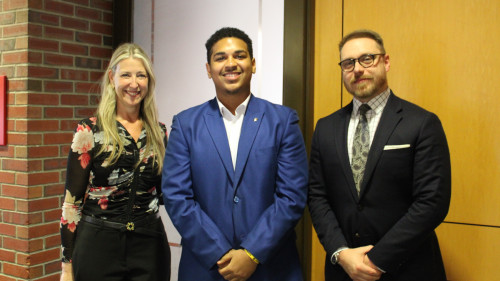

For several years, physics students at Siena have been building cloud chambers, a common tool used to “see” radiation. Their ongoing project hit a snag recently when the manufacturer of some of the components stopped making them. No worries, though – students are updating the design and creating their own parts using a 3-D printer.
Four students are tackling the challenge this summer: Keegan Vannier ’22 and Darryl Williams ’23 are working in Siena’s physics lab, while Will Wood ’22 and Alexa Robbins ’23 are working remotely from home – in North Carolina and upstate New York respectively. They’re all under the direction of Matt Bellis, Ph.D., associate professor of physics.
“This is really an engineering project, considering the design challenges, and so it lends itself to our growing applied physics major,” said Bellis. “The students had to test out a bunch of cooling fans and design a bunch of 3D printed parts and write new documentation and have absolutely knocked it out of the park."
Cloud chambers were formerly used in research and now mostly used in the classroom and educational outreach. These devices usually use dry ice and isopropyl alcohol to create a cloud of the alcohol. When a radioactive substance is placed in the chamber, the radioactive particles coming from the decay make little trails in the vapor, just like an airplane leaving contrails in the sky. But getting the dry ice can be an issue, especially on short notice.
To get around that supply issue, Siena students build cloud chambers that don't need dry ice. Using designs found online that incorporate inexpensive Peltier thermocoolers, students have modified and improved on the designs over the years. They have run workshops for local high school teachers so they can build their own versions for use in their classrooms, and developed an Instructables webpage so that anyone can build their own for around $150.
Once production ceased on some of the components, the Siena physics team had to head back to the proverbial drawing board. They updated the design, including the 3D-printed parts, which would no longer fit new components.
“They've each developed their own approaches to improvements to the whole design, which might even work better than the old one,” said Bellis. “In some sense, this is more like how the real world works, particularly going forward as companies explore remote work options for employees and wrestle with how to still maintain a sense of team and common purpose.”
“This is a great opportunity to get hands-on physics and engineering experience. We’re able to explore ways to not only build new parts, but to test out different models to improve the overall design and make it more cost-effective. The cloud chamber is a great way to illustrate the concept of radiation for younger science students. They may think ‘If I can’t see if, how do I know it’s real?’ This will show them.”
Darryl Williams ’23
“We test what works and what doesn’t, one step at a time. It can be frustrating, but you have to work through it.”
Keegan Vannier ’22

